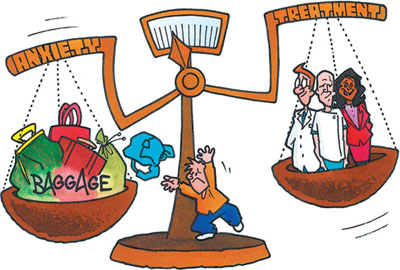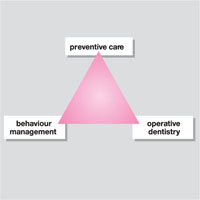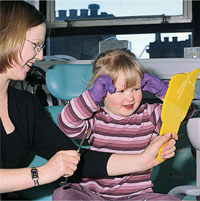Chapter 6
Sequential Treatment Planning
Aim
The aim of this chapter is to demonstrate how a sequential treatment plan can be built to facilitate successful child management.
Outcome
Having read this chapter the practitioner should be able to adopt a step-by-step approach to treatment planning for operative procedures in children irrespective of their initial presenting level of cooperation (Fig 6-1).

Fig 6-1 Scales of anxiety.
Introduction
Previous chapters have shown that emotional maturity, previous dental experience and the influence of the family, the dental surgery environment and the dental team all affect child management. Behavioural management techniques have been reviewed and in subsequent chapters we will explore the use of conscious sedation. At this stage it is appropriate to demonstrate how non-pharmacological and pharmacological techniques can be woven together in a sequential treatment plan (Fig 6-2).

Fig 6-2 Behavioural management, preventive care and operative dentistry are interwoven.
Gradual Introduction of Instruments and Procedures
Hill and O’Mullane (1976) show that 60% of anxious children can be helped by sequential treatment planning in which dental instruments and procedures are introduced gradually. This has to be carried out in a prearranged manner and therefore involves forward planning. It need not be time consuming. A typical treatment plan that could be used to treat an anxious child is shown in Table 6-1(a). It shows that some items of treatment can be completed while other instruments and procedures are being introduced (Fig 6-3).
| (a) Behavioural management | (b) How to add inhalation sedation | |
|
Visit 1 |
|
|
|
Visit 2 |
|
|
|
Visit 3 |
|
|
|
Visit 4 |
|
|
|
Visit 5 |
|
Items 1(a) and 2(a) can often be combined in the first visit

Fig 6-3 Dentist and child acclimatising.
Acclimatisation is about taking a child with no dental experience and assisting them to become ready to accept dental care. It is a combination of techniques (“Tell-Show-Do”, behaviour shaping, positive reinforcement and psychological planning), integrating these, with conscious sedation if required, into the operative plan.
Stabilisation/Temporisation/>
Stay updated, free dental videos. Join our Telegram channel

VIDEdental - Online dental courses


